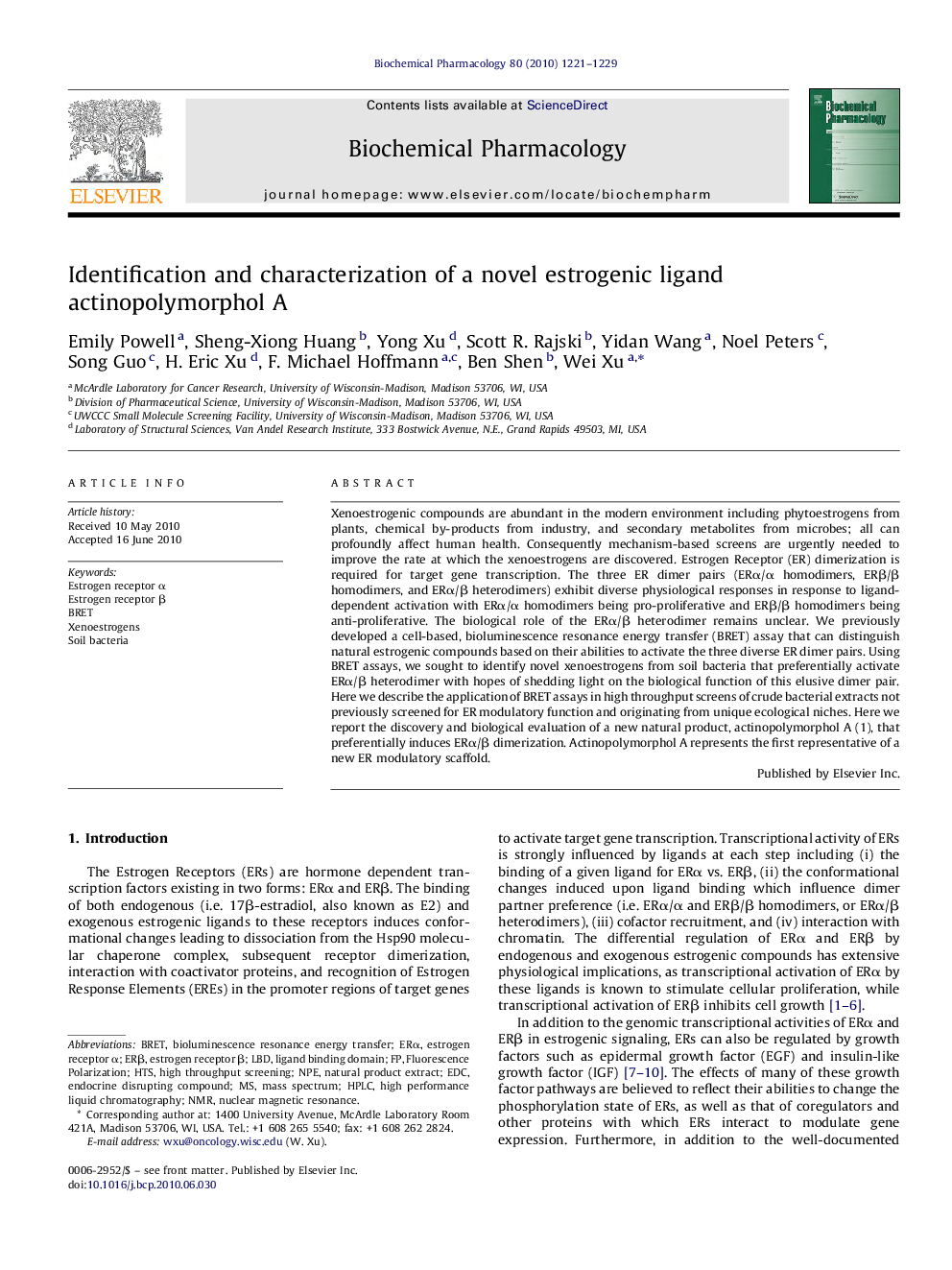| Article ID | Journal | Published Year | Pages | File Type |
|---|---|---|---|---|
| 2513301 | Biochemical Pharmacology | 2010 | 9 Pages |
Xenoestrogenic compounds are abundant in the modern environment including phytoestrogens from plants, chemical by-products from industry, and secondary metabolites from microbes; all can profoundly affect human health. Consequently mechanism-based screens are urgently needed to improve the rate at which the xenoestrogens are discovered. Estrogen Receptor (ER) dimerization is required for target gene transcription. The three ER dimer pairs (ERα/α homodimers, ERβ/β homodimers, and ERα/β heterodimers) exhibit diverse physiological responses in response to ligand-dependent activation with ERα/α homodimers being pro-proliferative and ERβ/β homodimers being anti-proliferative. The biological role of the ERα/β heterodimer remains unclear. We previously developed a cell-based, bioluminescence resonance energy transfer (BRET) assay that can distinguish natural estrogenic compounds based on their abilities to activate the three diverse ER dimer pairs. Using BRET assays, we sought to identify novel xenoestrogens from soil bacteria that preferentially activate ERα/β heterodimer with hopes of shedding light on the biological function of this elusive dimer pair. Here we describe the application of BRET assays in high throughput screens of crude bacterial extracts not previously screened for ER modulatory function and originating from unique ecological niches. Here we report the discovery and biological evaluation of a new natural product, actinopolymorphol A (1), that preferentially induces ERα/β dimerization. Actinopolymorphol A represents the first representative of a new ER modulatory scaffold.
Graphical abstractFigure optionsDownload full-size imageDownload as PowerPoint slide
